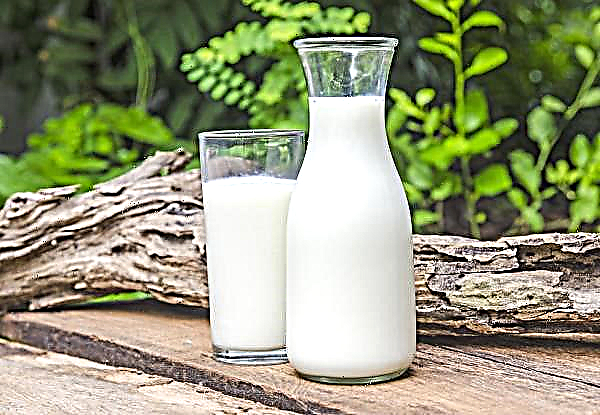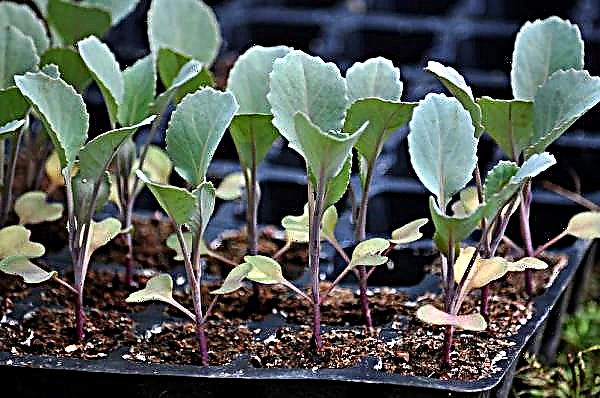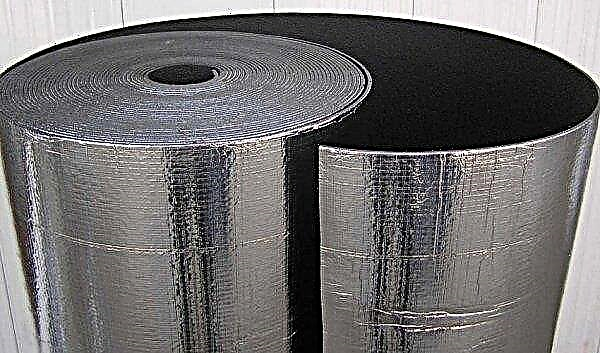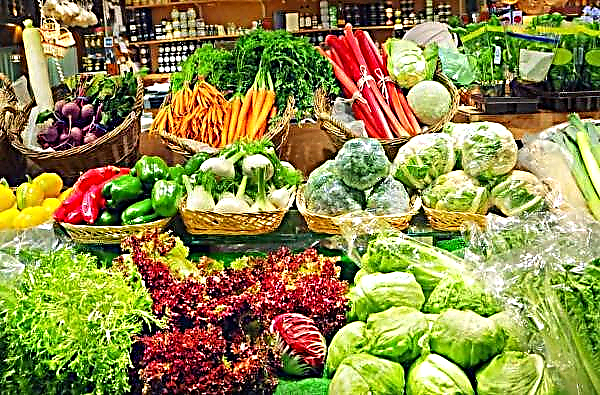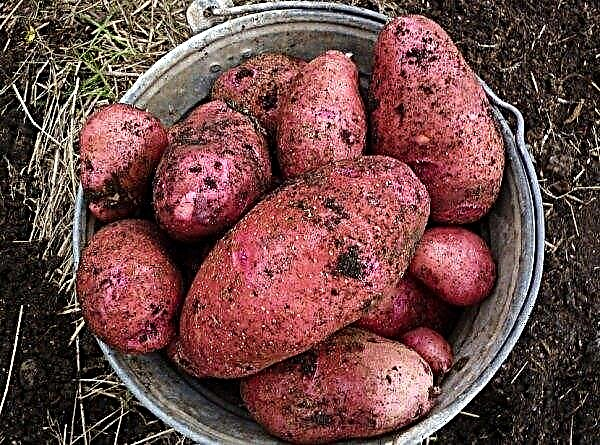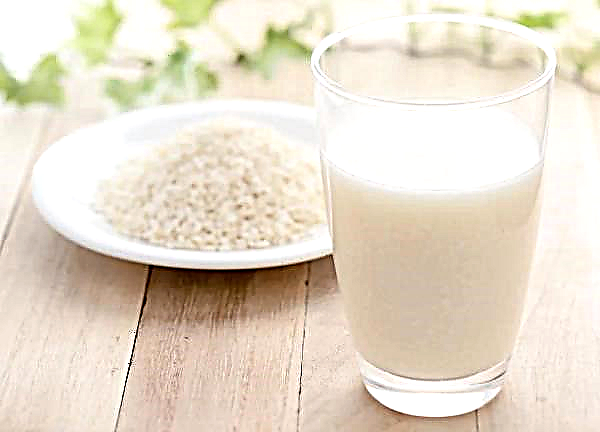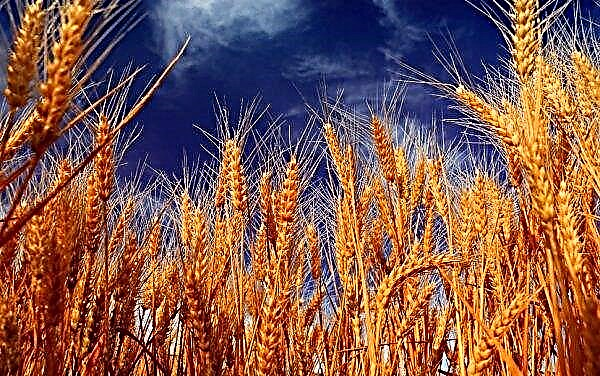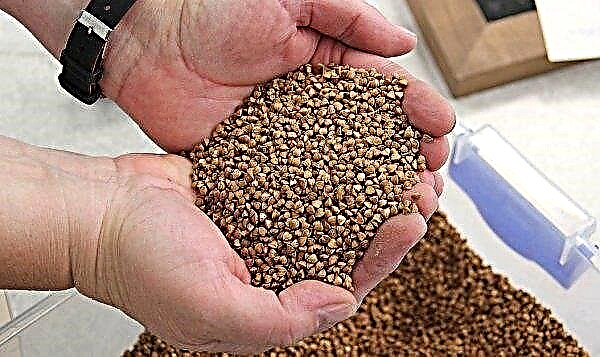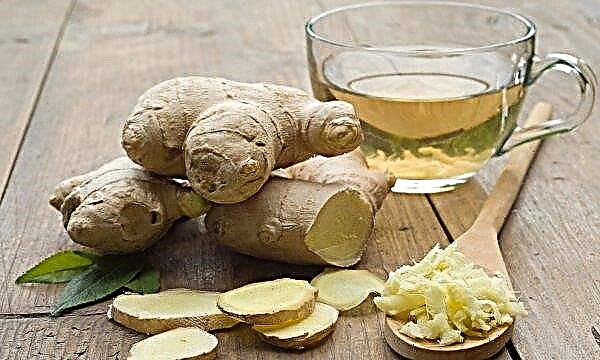Among all kinds of forest products, spruce resin occupies a special place for humans. This substance has increased aromatic properties, as well as specific compounds, the moderate use of which allows you to maintain health in many ailments. The article describes in detail the properties and characteristics of spruce resin, and also describes all the subtleties of its preparation and use.
Resin description
Resin is one of the most important compounds in the life of every coniferous plant. It stands out from all kinds of cracks, faults and other damage to wood and is, above all, protective. This explains its benefits to the plant. Filling various injuries, the substance envelops the destroyed tissue, creating a dense crust. Due to this, pests and fungi cannot infect a tree, which continues its life span at times.
In its composition, the substance is a thick liquid, which hardens with contact with air. This is a mixture of volatile substances of turpentine type (terpenes and terpenoids), as well as fatty acids (including their esters), alcohols, waxes, resenes and sterols. This combination allows the mixture to remain insoluble in contact with water, but at the same time easily transfer to the liquid phase when interacting with any organic solvent.

Also in the substance are found such components useful to humans as:
- vitamins - A, C, D, E, K, PP;
- minerals - iodine, manganese, cobalt, vanadium, phosphorus, zinc, silicon.
Did you know? In the national park Fulufialt, which is located in Sweden grows the oldest spruce in the world. The tree is about 9.5 thousand years old, which makes it the oldest living organism on the planet.
ATThis secret is produced in the outer tissues of wood, the so-called sapwood. This is the youngest and physiologically active tissue layer in which the bulk of all kinds of metabolic processes takes place. Outward resin is distinguished thanks to special wire channels connecting sapwood with the environment. Such moves are located both vertically and horizontally, and the length of one formation can reach up to 80 cm.
How to collect
After the well-known pine, the tree is considered one of the most common plants. It can be found quite widely, both in the southern latitudes and in the northern climate zone. And it is not surprising that the popularity of all kinds of extracts of this plant, including resin, was formed quite a long time ago. That is why amateur and industrial harvesting of spruce resin is considered one of the traditional occupations of each forestry. At the same time, self-assembly of the product is considered extremely popular.

To do this, you need the following set of inventory:
- sharp knife;
- a small cloth towel soaked in vegetable oil;
- two meters of tight rope (the best option is a paracord);
- container with a handle and a tight lid.
There are several ways to carry out such a procedure, it all depends on the final goals of the assembly. If you need a hardened resin, its procurement can be carried out throughout the year, but its greatest amount is observed in late autumn. Autumn fees often do not do any harm to the plant, since in fact the self-separated resin is removed from the pores or natural cracks and faults.
Important! Special attention should be paid to fir trees growing on dry soil. Such trees have the greatest resinity, in addition, their secret is also distinguished by increased saturation with all kinds of compounds.
To collect dry spruce product, you should:
- Choose a suitable tree, it should be abundantly covered with frozen drops of resin.
- Wipe the knife with an oily napkin (this will help remove the resin from the blade without much difficulty).
- Cut the product into small thin layers.
- Put the resin in the container and close the lid.
If you want to collect liquid resin, the best time for this is the warm season, so harvesting is carried out from early spring to early fall. The most abundant trees secrete a tarry secret in hot and dry weather, especially during short droughts. At the same time, it is not recommended to carry out collections at temperatures below + 15 ° C, cold leads to instant hardening of the product, which at times complicates the procedure.

Spend the preparation of liquid resin as follows:
- Fasten the collection container to the tree with a rope under one of the large branches, 20-30 cm lower. Do this so that one edge of the container neck fits firmly on the trunk. This will allow the resin to flow inside on its own.
- Wipe the knife with an oiled napkin and make a deep cut under the base of the branch to a bark thickness of about 5 cm.
- Wait a while until a small portion of the product drains into the container.
- After the resin is separated, remove the bucket and carry out the procedure with the next large branch.
If the trees in the site selected for harvesting are determined for cutting, the resin can be removed by the so-called extensive method. To do this, part of the bark on the tree is removed, and the container is fixed below. After that, the so-called hooks are performed on the trunk. They are gutter-shaped cuts up to 10 mm deep, made at an angle of 10–20 ° relative to the base every 10–15 cm. This allows you to collect at least 500 g of product from one spruce.
Important! Only adult spruce trees with a height of at least 10 are suitable for the preparation of the resin by the extensive method–15 m. For a young tree, this procedure may result in complete or partial wilting.
Medicinal properties and application in traditional medicine
Spruce resin has been used in folk medicine since ancient times, this product is a popular medical component for eliminating a whole complex of ailments. It is characterized immediately by two principles of action. First of all, resin acids and their esters have powerful antiseptic properties.

Therefore, the use of resin makes it possible to overcome all kinds of fungal and bacterial infections. The resin also has an immunostimulating effect, due to its rich vitamin and mineral composition.
- All this allows you to use all kinds of folk remedies and medicinal oils based on spruce product for the treatment of:
- internal and external inflammatory processes;
- cuts and injuries;
- pain caused by various pathological processes;
- insomnia and ailments of the nervous system;
- respiratory diseases;
- pathologies of the external integument;
- disorders of potency and the genitourinary system.
Contraindications
Despite its versatile health benefits, this natural component still has some contraindications for use for medicinal purposes.
First of all, such products are prohibited in any individual allergic reactions to coniferous pollen, as they are a strong allergen. It is also strongly not recommended that they be used by pregnant women, breast-feeding women and young children.
- In addition, without prior consultation with doctors it is forbidden to use spruce pine products:
- with ulcerative erosion of the digestive system;
- gastritis;
- all kinds of kidney pathologies.
Spruce resin is a valuable product for human health, which must be in everyone’s first-aid kit. Her fees are not difficult, so even children can be involved in the preparation of resin. However, only adult and healthy spruce should be selected for collecting the product, otherwise even the slightest damage to the trunk can lead to the death of the tree.

